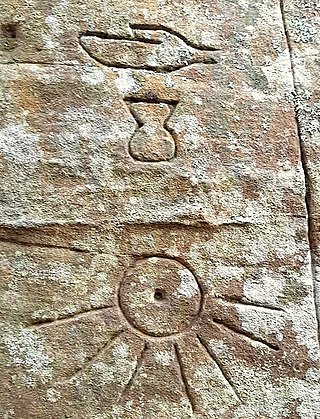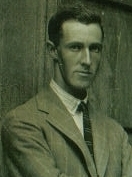Related Research Articles

The Piltdown Man was a paleoanthropological fraud in which bone fragments were presented as the fossilised remains of a previously unknown early human. Although there were doubts about its authenticity virtually from the beginning, the remains were still broadly accepted for many years, and the falsity of the hoax was only definitively demonstrated in 1953. An extensive scientific review in 2016 established that amateur archaeologist Charles Dawson was responsible for the fraudulent evidence.

An out-of-place artifact is an artifact of historical, archaeological, or paleontological interest found in an unusual context, which challenges conventional historical chronology by its presence in that context. Such artifacts may appear too advanced for the technology known to have existed at the time, or may suggest human presence at a time before humans are known to have existed. Other examples may suggest contact between different cultures that is hard to account for with conventional historical understanding.

The archaeology of Israel is the study of the archaeology of the present-day Israel, stretching from prehistory through three millennia of documented history. The ancient Land of Israel was a geographical bridge between the political and cultural centers of Mesopotamia and Egypt. Despite the importance of the country to three major religions, serious archaeological research only began in the 15th century. Although he never travelled to the Levant, or even left the Netherlands, the first major work on the antiquities of Israel is considered to be Adriaan Reland's Antiquitates Sacrae veterum Hebraeorum, published in 1708. Edward Robinson, an American theologian who visited the country in 1838, published its first topographical studies. Lady Hester Stanhope performed the first modern excavation at Ashkelon in 1815. A Frenchman, Louis Felicien de Saucy, embarked on early "modern" excavations in 1850. Today, in Israel, there are some 30,000 sites of antiquity, the vast majority of which have never been excavated.

Archaeological forgery is the manufacture of supposedly ancient items that are sold to the antiquities market and may even end up in the collections of museums. It is related to art forgery.
The year 1997 in archaeology involved some significant events.
Below are notable events in archaeology that occurred in 1912.

Charles Dawson was a British amateur archaeologist who claimed to have made a number of archaeological and palaeontological discoveries that were later exposed as frauds. These forgeries included the Piltdown Man, a unique set of bones that he found in 1912 in Sussex. Many technological methods such as fluorine testing indicate that this discovery was a hoax and Dawson, the only one with the skill and knowledge to generate this forgery, was a major suspect.

La Cotte de St Brelade is a Paleolithic site of early habitation in Saint Brélade, Jersey. Cotte means "cave" in Jèrriais. The cave is also known as Lé Creux ès Fées.

Gerald Lankester Harding was a British archaeologist who was the director of the Department of Antiquities of Jordan from 1936 to 1956. His tenure spanned the period in which the Dead Sea Scrolls were discovered and brought to public awareness. Without his efforts many of the scrolls might have disappeared into private collections never to be seen again.
The year 2010 in archaeology
Frightful Cave is a pre-Columbian archaeological site located in the state of Coahuila in northern Mexico. It was occupied on several occasions during the Archaic period by what seem to be nomadic hunter-gatherer groups and is an important source of archaeological evidence concerning the ancient desert tradition of the Central Mexican highlands.
Miles Russell, is a British archaeologist best known for his work and publications on the prehistoric and Roman periods and for his appearances in television programmes such as Time Team and Harry Hill's TV Burp.
The following events occurred in November 1953:
This page lists major archaeological events of 2017.
This page lists major archaeological events of 2018.
This page lists major events of 2020 in archaeology.
This page lists major events of 2021 in archaeology.
This page lists significant events of 2022 in archaeology.
References
- ↑ Yang, Xiaoping (2010). "Climate Change and Desertification with Special Reference to the Cases in China". Changing Climates, Earth Systems and Society. pp. 177–187. doi:10.1007/978-90-481-8716-4_8. ISBN 978-90-481-8715-7.
- ↑ Milik, J. T.; Cross, Frank M. (1954). "Inscribed Javelin-Heads from the Period of the Judges: A Recent Discovery in Palestine". Bulletin of the American Schools of Oriental Research (134): 5–15. doi:10.2307/1355623. JSTOR 1355623. S2CID 163381421 . Retrieved 2022-07-22.
- ↑ "Leather bkinis". Living in Roman London. Museum of London . Retrieved 2016-06-28.
- ↑ "Ancient History in depth: Piltdown Man: Britain's Greatest Hoax". BBC History. Retrieved 2017-05-30.
- ↑ "Chase, Arlen F. (Arlen Frank) 1953-". worldcat.org. Retrieved 2017-06-02.